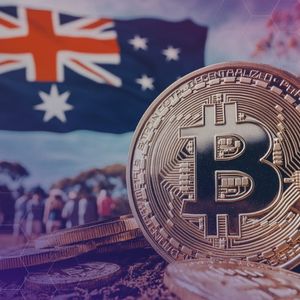
Since the signing of the 401(k) Act in the U.S., crypto exchanges worldwide have been eyeing retirement savings as a major on-ramp for digital assets. According to a Bloomberg report , Australia’s $2.8 trillion pension pool, known locally as superannuation, has emerged as one of the largest targets, with Coinbase and OKX rolling out products aimed at steering retirement funds into crypto. Superannuation, Australia’s mandatory retirement savings scheme, totaled $2.7 trillion as of September 2024, up from $1.2 trillion a decade earlier, with an average annual growth rate of 8.2%. This dwarfs the A$2.5 trillion market cap of all companies listed on the Australian Stock Exchange. Deloitte projects the sector will expand further, reaching $11.2 trillion by 2043 in nominal terms (about $7 trillion in today’s value). The massive size of this pool indicates why global exchanges view superannuation as a critical entry point. Coincidentally, the push into pensions also comes at a time when the super system is both seeking yield and grappling with its scale. Cath Bowtell, chair of IFM Investors, which manages $230 billion in assets worldwide, described the sheer magnitude in a report, stating that $3.2 billion flows into the system weekly, requiring constant investment opportunities. Super funds already span infrastructure ranging from U.S. toll roads to Canadian ports, but liquidity challenges and global risks mean funds are increasingly looking abroad for diversification. However, Deutsche Bank strategist Lachlan Dynan warned that this global reach could expose the system to shocks, especially if large-scale foreign exchange hedging leads to cash calls during crises. Yet the pandemic proved super’s flexibility, with Australians withdrawing $38 billion early without destabilizing markets. Against this backdrop, crypto appears more appealing as an alternative asset class, particularly for self-managed superannuation funds (SMSFs), which give individuals direct control over their investments. Source: Bloomberg Notably, SMSFs now account for a quarter of the pension system, and crypto exposure within them has already jumped sevenfold since 2021 to A$1.7 billion. Coinbase and OKX Launching Different Services Around the Trillion-Dollar Pension Pot Coinbase and OKX are focusing their pension-linked crypto strategies on SMSFs, which are seen as more receptive to alternative assets than traditional funds. Coinbase is reportedly developing a tailored service to tap Australia’s $600 billion self-managed pension sector. #Coinbase #Australia https://t.co/wlom8vfQ9E — Cryptonews.com (@cryptonews) May 16, 2024 “It does make sense that we’re probably seeing a bit more interest in crypto in the self-managed super fund space first,” said Fabian Bussoletti of the SMSF Association in the Bloomberg report, noting that larger funds may eventually follow. Coinbase is preparing to launch a dedicated SMSF service with more than 500 investors already on its waiting list. According to Asia-Pacific managing director John O’Loghlen, 80% of these potential users intend to establish a new SMSF, and 77% plan to invest up to A$100,000 in digital assets. OKX, which launched a similar product in June, has already seen demand exceed expectations, according to Australian CEO Kate Cooper. Both exchanges plan to streamline SMSF creation by linking investors to accountants and legal advisors. While no minimum balance is required, administrative costs mean SMSFs are generally viable only for larger accounts, positioning these offerings more for buy-and-hold investors than for active traders. For now, AMP remains the only major pension provider with disclosed crypto exposure. However, with growing momentum in SMSFs and rising demand for diversification, Coinbase and OKX are betting that mainstream super funds will eventually follow suit. AMP, one of Australia's leading superannuation funds, has allocated $27 million of its portfolio to Bitcoin. #Bitcoin #AMP https://t.co/uN83vEdKlE — Cryptonews.com (@cryptonews) December 12, 2024 If so, Australia’s massive pension system could become one of the most influential global gateways for institutional crypto adoption. Australia Emerges as Test Case for Crypto in Retirement Portfolios Amid Regulatory Crackdown Despite growing momentum, Australia’s experiment could hinge on whether crypto can overcome persistent regulatory skepticism. The country’s regulators—including ASIC, AUSTRAC, the tax office, and the central bank—have consistently urged caution. “These are highly volatile products, and overexposure can lead to substantial losses,” ASIC warned in an emailed statement, urging Australians considering crypto within SMSFs to seek professional financial advice. At the same time, regulators have intensified enforcement. Last month, AUSTRAC ordered Binance’s local arm, Investbybit Pty Ltd, to appoint an external auditor over money laundering and terrorism-financing concerns. The exchange has 28 days to nominate a firm for AUSTRAC’s review. @binance faces mandatory audit in Australia over serious AML and terror financing concerns amid nationwide enforcement campaign. #Binance #Australia https://t.co/lVsofJm6gC — Cryptonews.com (@cryptonews) August 22, 2025 This fits into a broader pattern of global scrutiny. In the U.S., OKX agreed to pay $500 million earlier this year for unlicensed transactions, while Coinbase was fined in the U.K. for servicing high-risk clients. AUSTRAC has itself escalated its oversight through a nationwide campaign targeting non-compliant exchanges and money laundering risks. In December, it established a task force to investigate suspicious activity associated with crypto ATMs, scams, and fraud. It also contacted 427 registered digital currency exchange providers that appeared inactive, warning them that they could face deregistration. Australia is stepping up efforts to tighten oversight of cryptocurrency exchanges, warning that inactive platforms risk deregistration. #Australia #Crypto https://t.co/L30zjADdHW — Cryptonews.com (@cryptonews) April 29, 2025 A forthcoming publicly searchable register will allow consumers to verify whether exchanges are properly licensed. Regulators fear dormant registrations allow criminals to piggyback on legitimacy while operating fraudulent schemes. ASIC has also stepped up its digital enforcement, shutting down an average of 130 scam websites per week. To date, it has disabled more than 10,000 malicious sites, including 7,200 fake investment platforms and 1,500 phishing scams. The regulator also secured court approval to wind up 95 companies tied to international “pig butchering” fraud , which left nearly 1,500 victims with losses totaling $35.8 million. Even compliant operators have come under pressure. Melbourne-based exchange Cointree was fined $75,120 for failing to file suspicious matter reports on time, with AUSTRAC stressing that such delays hinder law enforcement’s ability to trace illicit funds. While regulatory caution remains firm, the investor push into crypto-SMSFs continues. The Australian Tax Office, however, has issued a reminder that shows the policy dilemma: “The objective of superannuation is to preserve savings to deliver income for a dignified retirement.” The post Coinbase, OKX Unlock Australia’s $2.8 Trillion Pension Pot for Crypto — Bloomberg appeared first on Cryptonews .
